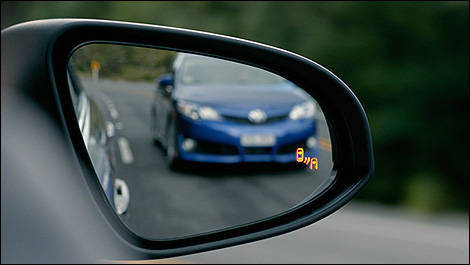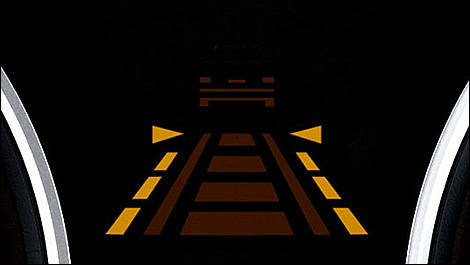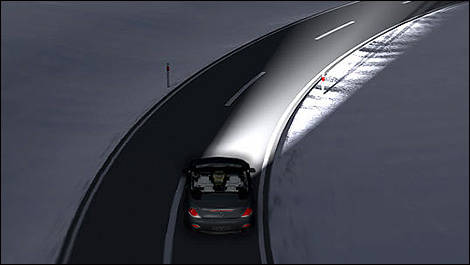Blind spot monitor
Proximity sensors monitor the areas drivers can't see with their mirrors. If you attempt to change lanes when another vehicle is in one of your blind spots, a light will flash on the corresponding mirror (left or right). Sometimes, there is even an auditory warning.
Lane departure warning
Cameras detect lane markings on the road so that when a driver unintentionally starts to change lanes (without activating the turn signal), the steering wheel may vibrate and/or an audible alert will go off. This system actively prevents distractions and drowsiness behind the wheel while also teaching you to use your turn signal regularly.
Adaptive headlights
Ensuring optimum visibility on the road, some headlights swivel when cornering, while others adjust the vertical angle of the beams. In both cases, this helps drivers see more of what lies ahead.
Of course, that's just a short list of available electronic aids. Other aids include:
Proximity sensors monitor the areas drivers can't see with their mirrors. If you attempt to change lanes when another vehicle is in one of your blind spots, a light will flash on the corresponding mirror (left or right). Sometimes, there is even an auditory warning.
 |
| Photo: Toyota |
Lane departure warning
Cameras detect lane markings on the road so that when a driver unintentionally starts to change lanes (without activating the turn signal), the steering wheel may vibrate and/or an audible alert will go off. This system actively prevents distractions and drowsiness behind the wheel while also teaching you to use your turn signal regularly.
 |
| Photo: Bmw |
Adaptive headlights
Ensuring optimum visibility on the road, some headlights swivel when cornering, while others adjust the vertical angle of the beams. In both cases, this helps drivers see more of what lies ahead.
 |
| Photo: Bmw |
Of course, that's just a short list of available electronic aids. Other aids include:
- Adaptive (or intelligent) cruise control which uses a radar to maintain a safe distance between your vehicle and the one ahead;
- Forward collision warning which senses when the vehicle ahead is slowing or stopped, and either alerts the driver of a possible crash or automatically applies the brakes;
- Parking assist;
- Rearview and surround view cameras;
- Night vision;
- Head-up displays;
- And all the various driving modes that adjust engine, transmission and chassis settings to improve stability and performance in specific conditions.


